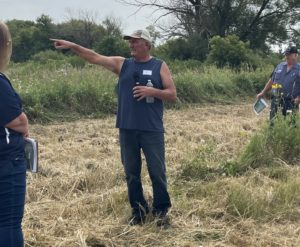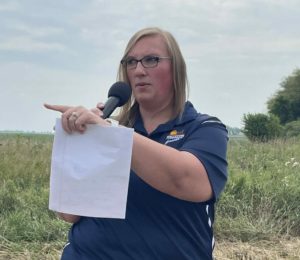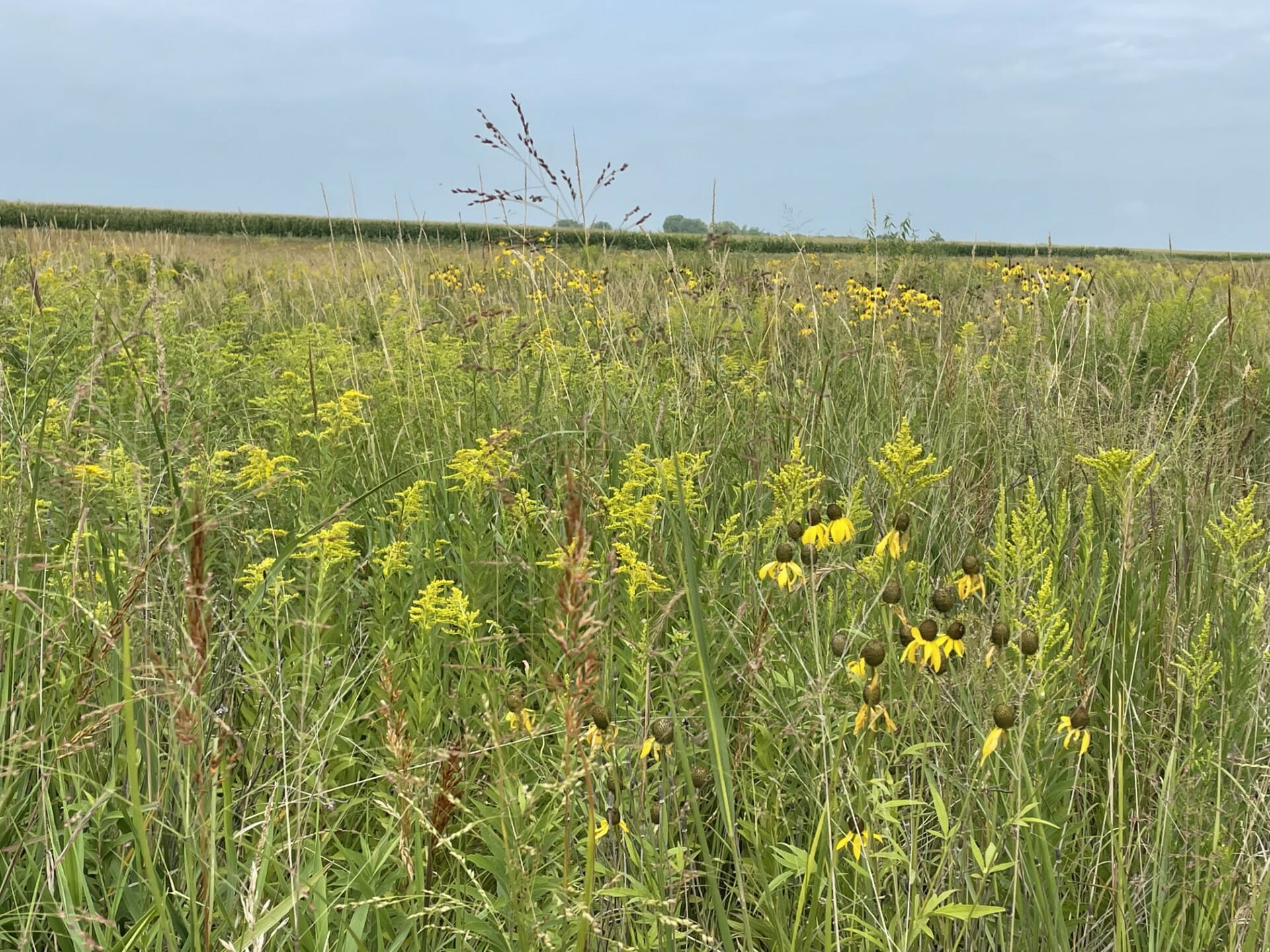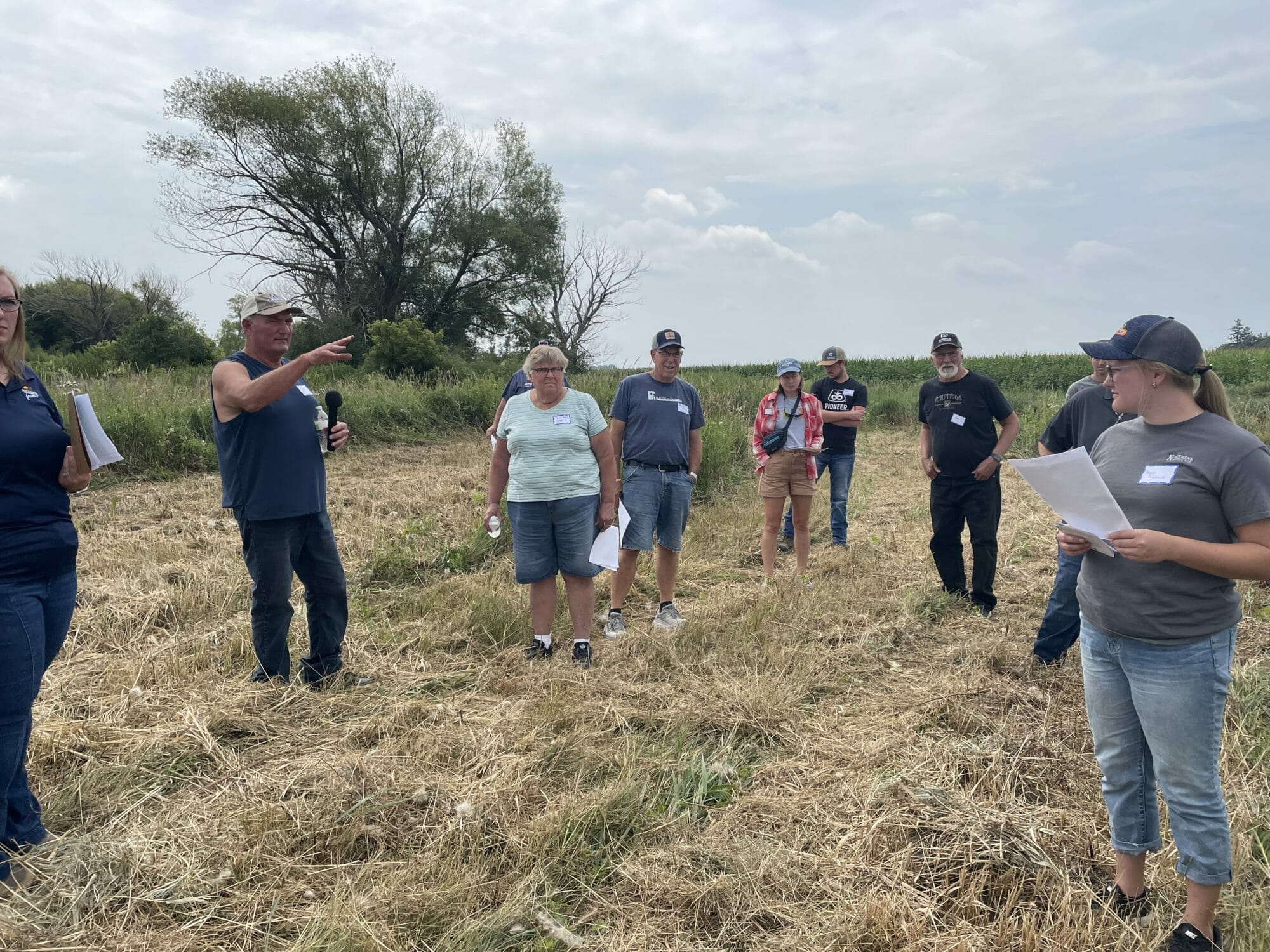Creating a Legacy of Conservation in Traditional Row Cropping

PFI member Joe Merten leads a field day on his Austin, MN farm, illustrating how conventional agriculture and conservation can work together.
On August 10, 2023, Joe Merten and family led their first field day with PFI in partnership with Pheasants Forever of Minnesota. The Merten family owns and operates a 2,200-acre corn and soybean farm near Austin, Minnesota, and work directly with Pioneer seed company as dealers. Joe is a conventional row cropper but is adamant that conservation and traditional agriculture can work well together.
“Making conservation work is the future of agriculture. When you have healthy land, you have healthy crops,” Joe said. “Most, if not all, farms have room for some kind of conservation that will give them success now and in the future. That’s what I’m trying to do here on our farm. Leave it better for those after.”
The tour began with BJ Werk, precision ag and conservation specialist with Pheasants Forever, demonstrating how precision agriculture works to create a more sustainable farm while maintaining or exceeding current crop yields on farms. Using a variety of programs through Pheasants Forever and CRP, the Mertens have established a critical habitat on their farm for pollinators and ground nesting birds.

Vast stretches of native prairie sweep the horizon of Joe Mertens 2,200-acre corn and soybean farm. Native grasses and shrubs provide essential habitat for pollinators.
Laura Newberg, a farm bill biologist with Pheasants Forever, and Joe’s daughter, led part of the tour of the prairie. Part of the prairie is in the State Acres for Wildlife Enhancements program, administered through the USDA. The program is meant to restore vital habitat, which is a particularly great fit for marginal areas of the farm that are lower in profits. Laura went on to explain that this practice often requires the breaking of tiles alongside the establishment of native plants and grasses, but by doing so, erosion of topsoil and capture of runoff on the rest of the farm is greatly enhanced.

Laura Newberg, a farm bill biologist with Pheasants Forever, points out several USDA program workings on her father’s farm during the family’s field day.
Management of the habitat on the Merten farm has largely been mowing, although some burns are planned for future dates. BJ explained during the event that routine burning can enhance habitat and rejuvenate stagnant growth of native grasses. Joe acknowledges that burning is needed, but given the last several dry years, has held off on that part of maintenance until conditions improve. “I know it needs to be burned, but I’d rather not see everything go up in flames!”
The field day concluded with a school bus tour to various sites on the farm to explore the remainder of the pollinator habitat. The Merten prairie highlighted the extensive biodiversity that can be attained on a conventional row crop farm. Joe’s CRP prairie contained a variety of plants including milkweeds, prairie cone flowers, aster and compass plant, along with myriad types of grasses and sedges.


